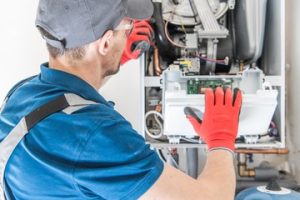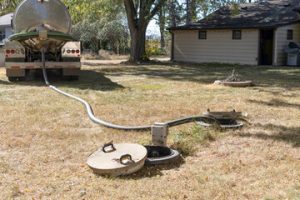A furnace seems silent until it fails. Its quiet role in providing warmth makes it one of the most essential systems in any space, yet one of the least noticed. When it stops working, the disruption can feel immediate and overwhelming. FURNACE REPAIR therefore, is not just about fixing a machine but restoring comfort and continuity.

The concept of furnace repair has evolved from simple mechanical adjustments to a complex blend of diagnostics, engineering, and preventive care. In earlier times, repairing a furnace involved basic cleaning, replacing visible parts, and reigniting pilot lights. Today, it often requires a deeper understanding of airflow dynamics, thermodynamics, and electronic systems. This shift reflects how heating technology has advanced and why skilled professionals must adapt continuously.
A properly functioning furnace depends on the balance of multiple components working seamlessly together. Burners, blowers, sensors, thermostats, and heat exchangers all play distinct roles in producing and distributing heat. A single malfunction in any of these parts can lead to inefficiency or complete system failure. Recognizing which element is responsible for a problem is the first step in successful repair.
The diagnostic process is at the heart of furnace repair. Modern systems often feature built-in sensors and error codes that provide clues, but understanding those signals requires expertise. Technicians learn to interpret patterns of performance, unusual sounds, or changes in air temperature. These observations guide them to underlying issues that might otherwise go unnoticed.
One of the most common furnace issues involves airflow restriction. Dust accumulation, clogged filters, or blocked vents can cause overheating, leading to shutdowns. Repairing such problems involves more than just cleaning; it requires evaluating the system’s overall ventilation and ensuring that pressure levels are balanced. Ignoring airflow issues can reduce the lifespan of a furnace significantly.
Thermostat problems are another frequent cause of malfunction. Sometimes the furnace itself is functional, but the thermostat fails to communicate accurate temperature readings. Repairing this requires recalibration or replacement, along with testing the electrical signals that control the heating cycles. In many cases, correcting a thermostat issue improves energy efficiency dramatically.
Mechanical wear is inevitable in any system that runs for long periods. Motors, belts, and bearings degrade over time and can cause noise, vibration, or reduced performance. Repairing mechanical issues involves precision and timing. Replacing components too late risks further damage, while doing it too early increases maintenance costs. Skilled technicians know how to assess wear and predict failure points before they become critical.
Electrical components play a crucial role in furnace operation, and faults in this area can be among the most dangerous. Short circuits, faulty relays, or wiring issues not only prevent the furnace from working but also pose fire hazards. Repairing electrical elements demands careful testing and strict adherence to safety protocols. This aspect of furnace repair underscores why it is rarely a suitable task for untrained individuals.
The heat exchanger is one of the most important yet delicate parts of a furnace. Its job is to transfer heat from the combustion process to the air without allowing harmful gases to escape. Cracks or corrosion in the heat exchanger can lead to carbon monoxide leaks, making prompt repair essential for safety. Repairing or replacing a damaged heat exchanger requires both technical expertise and specialized equipment.
Combustion-related issues also require careful attention. Incorrect fuel-to-air ratios can reduce efficiency, increase emissions, or even prevent ignition altogether. Technicians use instruments to measure combustion performance and adjust the system for optimal operation. These adjustments not only restore heat but also improve safety and reduce energy consumption.
Preventive maintenance is closely linked to furnace repair. Regular inspections can identify minor issues before they escalate into major failures. Cleaning components, lubricating moving parts, and tightening connections all contribute to extending the furnace’s operational life. Repair is often less costly and less disruptive when done proactively rather than reactively.
The rise of smart technology has added new layers to furnace repair. Modern furnaces may be connected to digital thermostats, remote monitoring systems, or home automation networks. When problems occur, repair involves not only the mechanical system but also software and communication protocols. Understanding these interactions is becoming an increasingly valuable skill in the repair field.
Energy efficiency is another driving factor behind furnace repair decisions. Older furnaces often waste significant amounts of fuel due to wear or outdated design. Repairs that improve efficiency—such as sealing ducts, upgrading components, or optimizing combustion—can lead to long-term savings. This makes professional repair not just a necessity but a financial investment.
The environmental impact of furnace performance is gaining more attention as well. Malfunctioning systems can emit higher levels of pollutants or consume more fuel than necessary. Repairing and maintaining furnaces to meet modern standards contributes to sustainability efforts. As regulations evolve, proper repair practices help ensure compliance while reducing ecological footprints.
Seasonal timing plays an important role in furnace repair strategy. Conducting repairs during off-peak months prevents breakdowns when the furnace is needed most. It also provides more time to address complex issues without the pressure of immediate demand. Planning ahead often results in better performance and fewer emergency calls.
For homeowners and property managers, understanding the basics of furnace repair can be empowering. While most complex repairs should be handled by professionals, knowing how to recognize early warning signs is invaluable. Strange noises, frequent cycling, or uneven heating are signals that the system needs attention. Acting quickly can prevent more serious damage.
Repair costs vary widely depending on the nature of the problem, but they are almost always lower than replacement costs. However, there comes a point where replacement becomes more economical than repeated repairs. This decision requires weighing factors such as the furnace’s age, condition, and efficiency. Professional assessments help guide this choice wisely.
Furnace repair also intersects with safety education. Technicians often advise clients on how to operate their systems safely, including proper ventilation and regular filter changes. These small actions reduce risks and improve overall performance. The educational aspect of repair is as important as the technical one.
The industry continues to evolve, and future furnace repair will likely incorporate even more advanced diagnostics, predictive analytics, and automation. Systems may eventually alert technicians to issues before users even notice them. As technology advances, the emphasis on continuous learning for repair professionals will only grow.
Ultimately, furnace repair is more than a technical service—it is a commitment to comfort, safety, and sustainability. It reflects a balance between reactive problem-solving and proactive care. The work that goes into keeping a furnace operational ensures that homes and buildings remain warm, safe, and efficient. Through careful attention, evolving expertise, and precision techniques, the art of furnace repair continues to adapt and thrive.
Understanding this hidden world helps us appreciate the systems we rely on daily. Behind every burst of warm air is a network of components working in harmony, maintained by hands that understand their language. And when those hands restore a failing furnace, they do more than repair a machine—they rekindle the warmth that makes a space feel like home.


